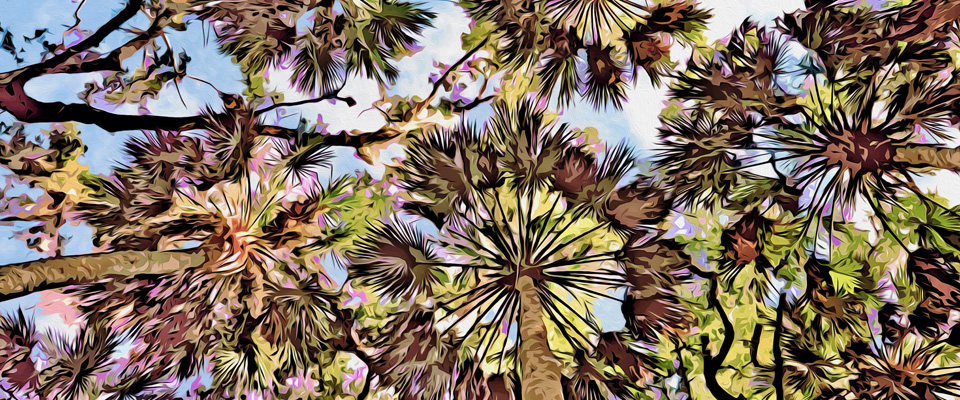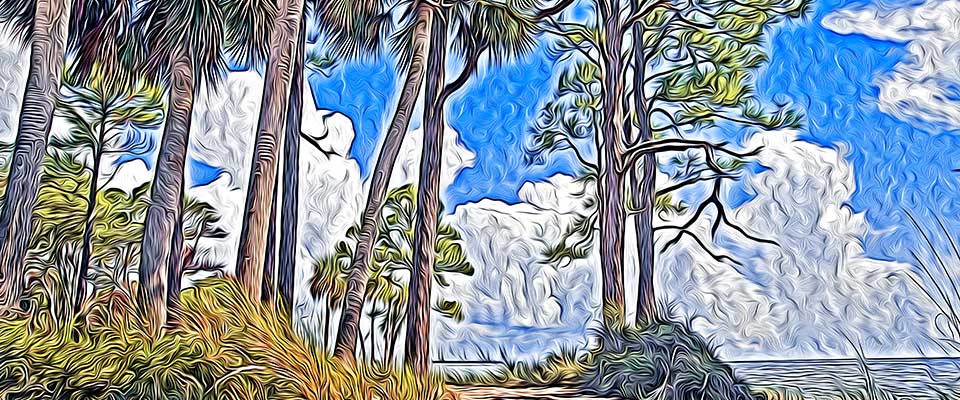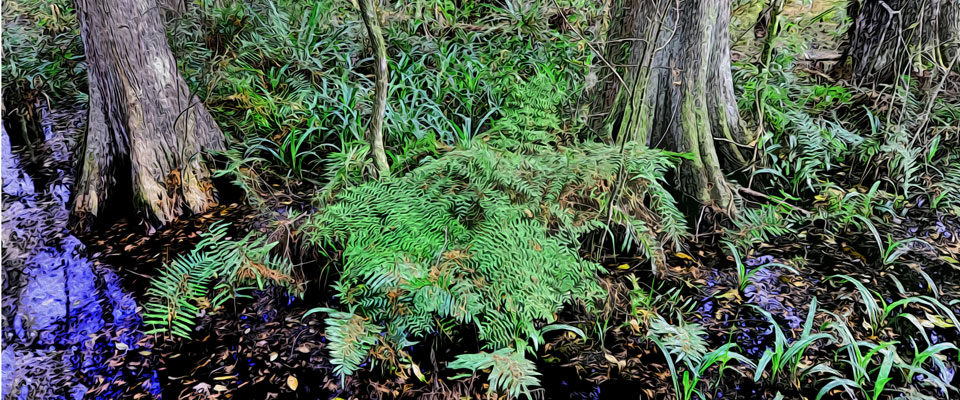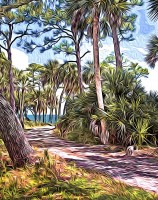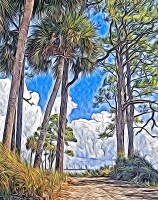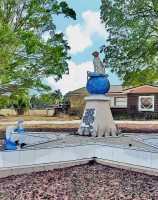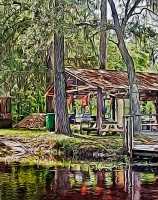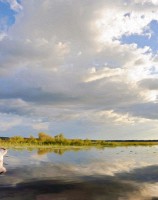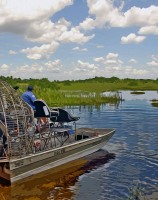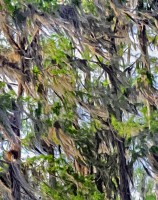My family enjoys deer and duck hunting on St. Vincent Island, just offshore from the mouth of the Apalachicola River in the Gulf of Mexico. The barrier island is managed as a National Wildlife Refuge, and I enjoy hunting for different kinds of things like seashells, driftwood, and wildlife along its quiet roads made of a curious mixture of oyster shells, pine needles, and sand. View large image and pricing.
Both St. George Island and St. Vincent Island probably received their European names in 1633 from the Franciscan Friars establishing Spanish missions in North Florida’s Apalachee Indian territory. While St. George Island to the east is long and narrow, St. Vincent’s chunky, triangular shape reaches toward Cape San Blas looking something like a crab claw. View large image and pricing.
The shrine reads: “I surrendered my life in exchange for my owner’s freedom but in return he built a place for me on top of the world. Lucy Forever Faithful 1983-1994.” There are several stories circling Ft. Myers about what this front yard memorial is all about. View large image and pricing.
Just about all 36 miles of the St. Marks River south of Tallahassee are glorious. The spring fed river is a curvy, canopied celebration of my homeland — revealing everything from breathtaking natural splendors to the region’s quirky downhome charms. The hamlet of St. Marks just may be the oldest existing river town in North America (having been developed by the Spanish as a province port in 1693)…View large image and pricing
While looking at Edward Hopper’s Cape Cod Morning, a docent at the National Portrait Gallery told me that she overheard a father asking his five year old son, “What do you think she’s looking at?” She couldn’t hear his reply, but then it really doesn’t matter. A resolution would no doubt ruin the painting for me. View large image and pricing.
As a part of the region’s massive public works system that provides flood protection and adequate water supplies for South Florida, three vast Water Conservation Areas (WCAs) are maintained in Miami-Dade, Broward and Palm Beach Counties using a system of levees and water control structures. The WCAs sustain remnant Everglades wetlands, and their combined footprint of 1,346 square miles is bigger than the state of Rhode Island. See large image and pricing
Closely related to pineapples, the indigenous people called the bromeliad known for draping Southern canopies “tree hair.” The French thought it look like conquistador beards, and their mocking moniker caught on and is probably why it is now known as “Spanish moss.” We do not know what tribe it was that called it “tree hair,” but the name makes more sense to me. View large image and pricing.




